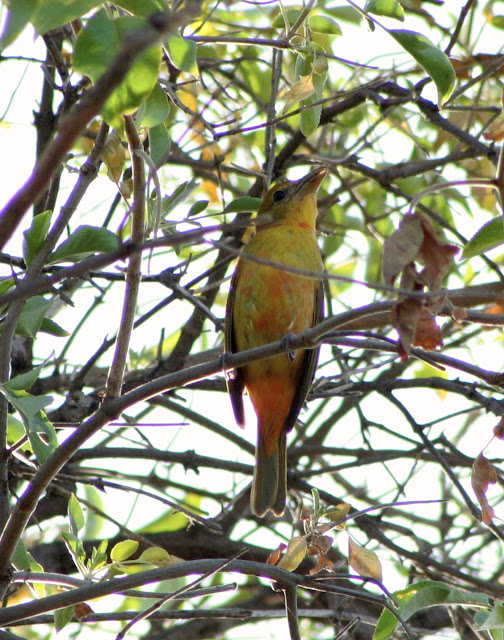Saturday, April 15, 2023
This blog will cover specific birds observed since my last conversation about birds seen in particular places. There will be no chronological order of the photos below. But each has been seen since my previous blog date of March 19th.
I'll start with a small heron first seen far back in time during my years in Virginia that gave me an exceptional "rush" because it seemed acrobatic. I didn't know this bird that was balanced on outstretched legs/feet on reeds to each side of it. That first LEAST BITTERN stays with me as a slide from my first camera, a Minolta. It is not a common bird.
Much more likely to be seen in the eastern part of the USA, I was thrilled to discover it several years ago at our #1 local birding spot, Riparian Preserve at Gilbert Water Ranch, in the east valley of Phoenix.
Yesterday, I headed there early to see if I would catch the LEAST BITTERN during its stay this time of year. Yay! Note how this small, thick-necked heron with a long pointed bill uses it relatively short legs to hold its perch while looking for small fish. The first two photos are of the same individual that I was able to photograph from the pedestrian bridge at the fishing lake. Bitterns prefer marshes with pockets of dense vegetation near open water.
This lower photo may be a male as it seems much darker and bulkier than the heron photos above. It was located in reeds across from the other LEAST BITTERN but also photographed from the bridge. My morning couldn't have started much better!
Becoming a "Birder" involves knowing the name of a bird, its physical description, its habits, and most importantly, I discovered, its special feathering leading up to and during its breeding season. Knowing its preferred habitat is also helpful; I'm not likely to find a Prairie Hen running around the desert.
The Drake RUDDY DUCK is just one example of a unique breeding change. A small, short-bodied compact duck about 15" long, it forages on the open water of ponds and lakes, usually in clustered flocks. A helpful diagnostic is its raised tail as it floats or paddles around. With a sloping forehead, the wide gray bill extends from it. The Drake's white cheek is clear and distinctive while the Hen's face seems grayer and also has a dark line leading from the base of its bill through the cheek, below the eye. 
The difference between male and female birds of the same species can present a challenge unless you see the bird frequently. An example would be the different appearance of a SUMMER TANAGER male and female any time of year. Beginning birders (I'm still guilty) like to use color to identify a bird. Well, take a look.
But, wait! What is the bird below?
The photo above is an immature male SUMMER TANAGER, coming into its red color. Taken at Hassayampa River Preserve several years ago, if you found this off by itself, would you know how to identify it?
Recently, a male SUMMER TANAGER showed up at Gilbert Water Ranch. Luckily, I managed to get several photos as it sat on a limb singing.
That's it for today. This time of year I leave early in the morning to catch the birds when they wake up...and before our desert temperature sends me home too quickly.,
Until next time...enjoy the birds and the habitat.
* * *










Thank you for this Babs, your tips & suggestions are very useful as I embark in this fun birding activity.
ReplyDeleteIs the difference between a male Summer Tanager and Northern Cardinal the head? Is the Summer Tanager stocky vs a longer sleeker build of the Northern Cardinal?